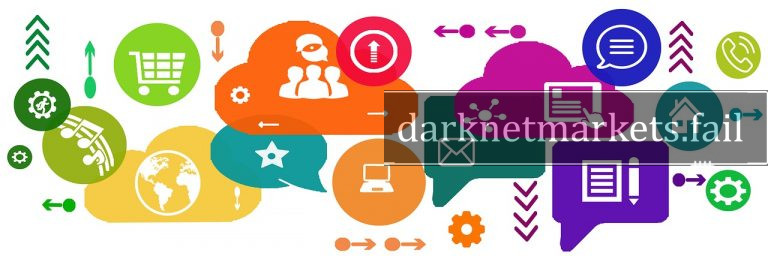Digital Ecosystem: Understanding the Interconnected World of Technology

Digital Ecosystem – In today’s increasingly connected world, the term digital ecosystem has become more prevalent, representing a complex, interconnected network of technologies, platforms, users, and services. The digital ecosystem is a dynamic system where different technologies, businesses, and industries interact with one another, often leading to innovation, disruption, and transformation. Whether we realize it or not, the digital ecosystem impacts nearly every aspect of our lives, from the way we shop and socialize to how businesses operate and innovate.
In this blog post, we will explore what a digital ecosystem is, how it works, the various components that make up the ecosystem, and why it is essential for individuals, businesses, and governments to understand its structure and potential.
What is a Digital Ecosystem?
A digital ecosystem is a system of interconnected digital technologies, applications, services, and platforms that interact with each other to provide value. It’s not limited to one specific industry but spans across sectors like finance, healthcare, entertainment, retail, and more. Much like a biological ecosystem, where different species interact with each other and their environment, a digital ecosystem thrives on collaboration and integration among its participants.
The digital ecosystem includes a variety of interconnected technologies that work together to enable data flow, communication, and automation. These technologies are built on digital infrastructure and are often powered by the internet, cloud computing, data analytics, artificial intelligence (AI), and the Internet of Things (IoT). By facilitating seamless interactions between various entities, the digital ecosystem enables businesses to operate more efficiently, scale faster, and offer better products and services to their customers.
Components of the Digital Ecosystem
A digital ecosystem is composed of several critical components, each playing a role in enabling the overall function and connectivity of the system. Here are some of the main components:
1. Digital Platforms
Digital platforms serve as the foundation for most digital ecosystems. These platforms act as hubs where different participants (consumers, businesses, developers) come together to share, create, and consume digital content or services. Some examples of digital platforms include e-commerce websites like Amazon and eBay, social media networks like Facebook and Instagram, and cloud computing platforms like Amazon Web Services (AWS) and Microsoft Azure.
These platforms often provide tools and APIs (Application Programming Interfaces) that allow third-party developers to build applications, services, and integrations on top of the platform. The success of these platforms is often driven by the scale and diversity of users and the value they generate through their interactions.
2. Cloud Computing and Infrastructure
The cloud is an integral part of the digital ecosystem, enabling companies to store data, host applications, and run computing processes on remote servers. This eliminates the need for businesses to rely on expensive physical infrastructure and allows for greater scalability, flexibility, and cost-efficiency.
Cloud services like Amazon Web Services (AWS), Google Cloud, and Microsoft Azure offer infrastructure-as-a-service (IaaS), platform-as-a-service (PaaS), and software-as-a-service (SaaS) solutions that make it easier for companies to leverage digital tools and services without the need for in-house expertise.
3. Internet of Things (IoT)
The Internet of Things (IoT) refers to the network of connected devices that communicate with each other and the internet. These devices, which can range from smartphones and wearable devices to smart home appliances and industrial machines, collect data and can trigger actions automatically based on that data.
IoT is a key driver of digital transformation, providing businesses with valuable real-time insights, automating processes, and improving customer experiences. For example, in the healthcare industry, IoT devices can monitor patient health metrics in real-time and send alerts to doctors, enabling timely interventions and personalized care.
4. Data Analytics and Artificial Intelligence
At the heart of the digital ecosystem is data. Data analytics and artificial intelligence (AI) play a crucial role in making sense of the vast amount of information flowing through the system. By using algorithms and machine learning models, businesses can analyze patterns, make predictions, and automate decision-making processes.
For example, Netflix uses data analytics and AI to recommend movies and TV shows based on user preferences, while Amazon uses AI to optimize inventory management, pricing, and logistics. In healthcare, AI-powered systems can help analyze medical data, diagnose diseases, and recommend treatments, improving both the efficiency and accuracy of care.
5. Blockchain Technology
Blockchain is a distributed ledger technology that enables secure, transparent, and tamper-proof transactions without the need for intermediaries. It has gained significant traction in various industries, including finance, supply chain, and healthcare, due to its ability to securely track transactions and data across a decentralized network.
In a digital ecosystem, blockchain enables transparency, trust, and accountability. For example, in the financial sector, cryptocurrencies like Bitcoin and Ethereum are powered by blockchain technology, enabling peer-to-peer transactions without the need for banks or centralized authorities.
6. Cybersecurity
As digital ecosystems become more interconnected, cybersecurity becomes increasingly critical. With more data being generated and shared across platforms, protecting that data from unauthorized access, breaches, and cyberattacks is paramount. Cybersecurity technologies, such as encryption, firewalls, and multi-factor authentication (MFA), help safeguard the integrity and privacy of data in digital ecosystems.
Cybersecurity also plays a role in building trust among users. Consumers are more likely to engage with platforms that demonstrate a commitment to protecting their personal data and information.
How Digital Ecosystems Are Transforming Industries
Digital ecosystems are having a profound impact on multiple industries, enabling companies to innovate, compete, and improve efficiency in ways that were previously unimaginable. Let’s take a look at a few industries being transformed by the digital ecosystem:
1. Healthcare
In healthcare, digital ecosystems are enabling better patient care, remote monitoring, and personalized medicine. With the integration of IoT devices, healthcare providers can monitor patient vitals in real-time and intervene when necessary. Telemedicine platforms, powered by cloud computing and AI, are making healthcare more accessible and efficient.
2. Retail and E-Commerce
Retailers are leveraging the digital ecosystem to improve customer experiences, optimize inventory management, and streamline supply chains. E-commerce platforms like Amazon are using AI to recommend products to customers, while blockchain technology is being used to improve the transparency of the supply chain.
3. Finance
In the finance industry, digital ecosystems are driving the rise of FinTech (Financial Technology) solutions, such as mobile banking, peer-to-peer lending, and cryptocurrencies. These innovations are providing consumers with more convenient and affordable financial services while disrupting traditional banking models.
4. Education
In education, digital ecosystems are enabling the growth of online learning platforms and digital classrooms. EdTech platforms like Coursera, Udemy, and Khan Academy are offering online courses and certifications that are accessible to anyone with an internet connection, democratizing education and providing lifelong learning opportunities.
The Future of the Digital Ecosystem
As technology continues to evolve, so too will the digital ecosystem. Emerging technologies such as 5G, quantum computing, and augmented reality (AR) are expected to further enhance the interconnectedness of the digital ecosystem, opening up new possibilities for innovation and collaboration.
The digital ecosystem will continue to play a central role in the transformation of industries, enabling new business models, improving operational efficiency, and creating better user experiences. However, it also raises challenges related to privacy, security, and regulation, which will need to be addressed as the ecosystem grows.
Conclusion
The digital ecosystem is the backbone of the modern digital world, providing the infrastructure and technologies that enable global connectivity, data sharing, and innovation. By understanding how the digital ecosystem works, businesses can position themselves to thrive in an increasingly connected world. As technologies evolve and new challenges arise, the digital ecosystem will continue to reshape industries and society as a whole, driving the next wave of digital transformation.



